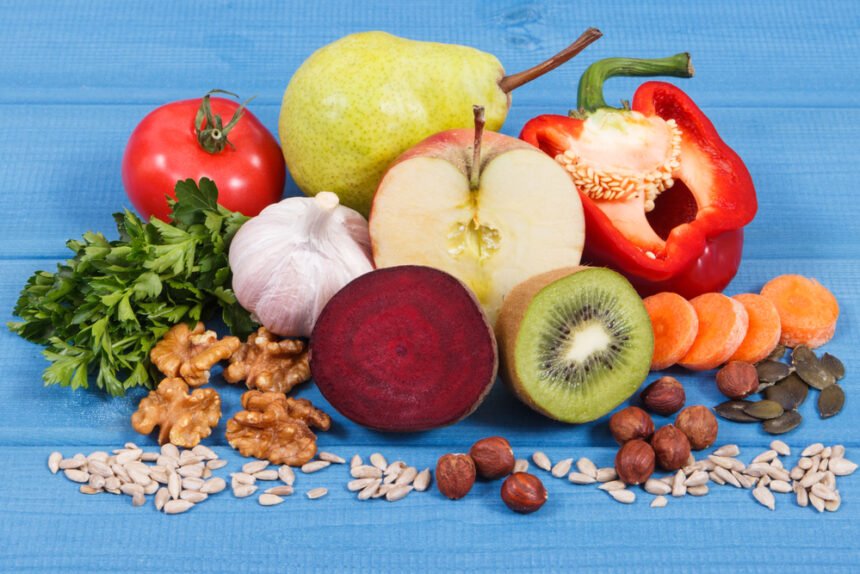Discussions around living a healthy lifestyle are the subject of a great deal of research and new recommendations every year. They allow people to change their habits, delay ageing and prevent disease. One of the topics that has attracted a lot of interest lately is inflammation-free diets. So, in this text, we’ll look at how to avoid inflammation and where to start with these changes.
What is inflammation?
Inflammation is considered to be a normal response of the body’s immune system to allergens, bacteria or viruses. In some cases, we do not feel that the body is fighting a foreign invader, in others we feel heat, pain, and we can see changes visually – a certain area becomes red or swollen.
However, when this process becomes a permanent internal state of the body, it becomes problematic. Recent research shows that inflammation has a direct link to the onset of various diseases and the difficulty in curing them. Therefore, those who want to avoid negative consequences for their health now and in the future as well, should pay more attention to their diet and ensure that it is inflammation-free.
Inflammation-free lifestyle
There are a lot of different causes of inflammation, but your diet and stress levels are two of the biggest. You will want to change your diet to keep your inflammation levels down.
The anti-inflammatory diet may seem unusual because it has no strict rules that limit calories or portion size. In other words, this lifestyle is not based on the quantity of food but on its components. It consists of a great variety of food, which has an immunity boosting effect. In this way, with minimal effort you get rid of inflammation in your body, ensure a healthy gut microbiota, prevent surges in blood glucose, etc.
Please find of the examples of inflammation-free foods down below:
· Vegetables (especially broccoli, cauliflower and cabbage);
· Fruits (especially blueberries, grapes and cherries);
· Legumes (especially chickpeas, lentils and peas);
· Healthy fats and high fat fruits (such as avocados and olives);
· Foods with polynsaturated omega-3 fats (such as walnuts, chia seeds, salmon, herring)
· Coffee and tea;
· Dark chocolate (at least 80% cocoa solids);
· Various herbs.
Also it is recommended to avoid junk food: sweetened beverages, fried and high-fat containing foods (such as bacon, hot dogs, burgers etc.) Those who want to follow an inflammation-free lifestyle should also eliminate or severely restrict sweets, butter, cream and meat from their diet.
Of course, it is also important to note that for those who want to live an inflammation-free lifestyle, dietary regulation alone will not be enough. In addition to replacing your existing diet with a new one, you also need to get the right number of hours of sleep and exercise regularly. It is this combination of lifestyles that will ensure good results. This way you will not only improve your well-being, but you will also reduce the chance of heart disease, cancer, diabetes, asthma, Alzheimer’s disease and avoid many other negative effects on your health.
What to begin with?
If you are expecting to be able to easily find inflammation-free diet plans online, you may be disappointed. So far, there are only a very small number of them and it is doubtful whether the type of inflammation-free diet plans can be expected to increase.
However, those who want to start a new lifestyle with a clear roadmap will certainly find something to help them. For example, Immudi reviews presented on their website and this one on exercisewithstyle.com show that the app is an indispensable tool for those who want to have a better understanding of anti-inflammatory diets and overall wellness as well as to lose some weight. It offers more than 100K+ plans. Obviously, you will be able to find the right one for you.
In order to change your lifestyle, especially your diet, it is advisable not only to follow your preferences, but also to surround yourself with people who also care about an inflammation-free life. This makes it easier to develop new eating habits without cheating yourself. Plus, having a community that shares the same goals means you can ask for help if you have any difficulties or questions.
Finally, starting an inflammation-free lifestyle requires your own strong will to change. Only you are responsible for your health and well-being. So, living with a clear goal and a daily routine that includes an inflammation-free diet, enough sleep and time for physical activity will definitely lead to satisfying results in the future.







